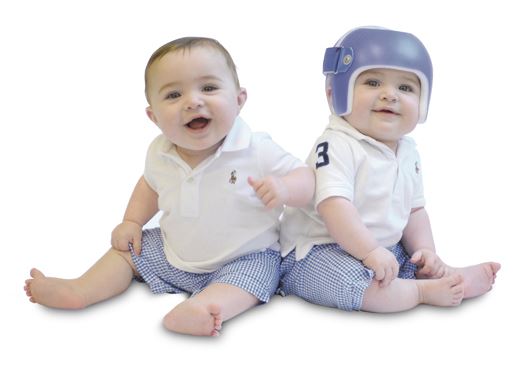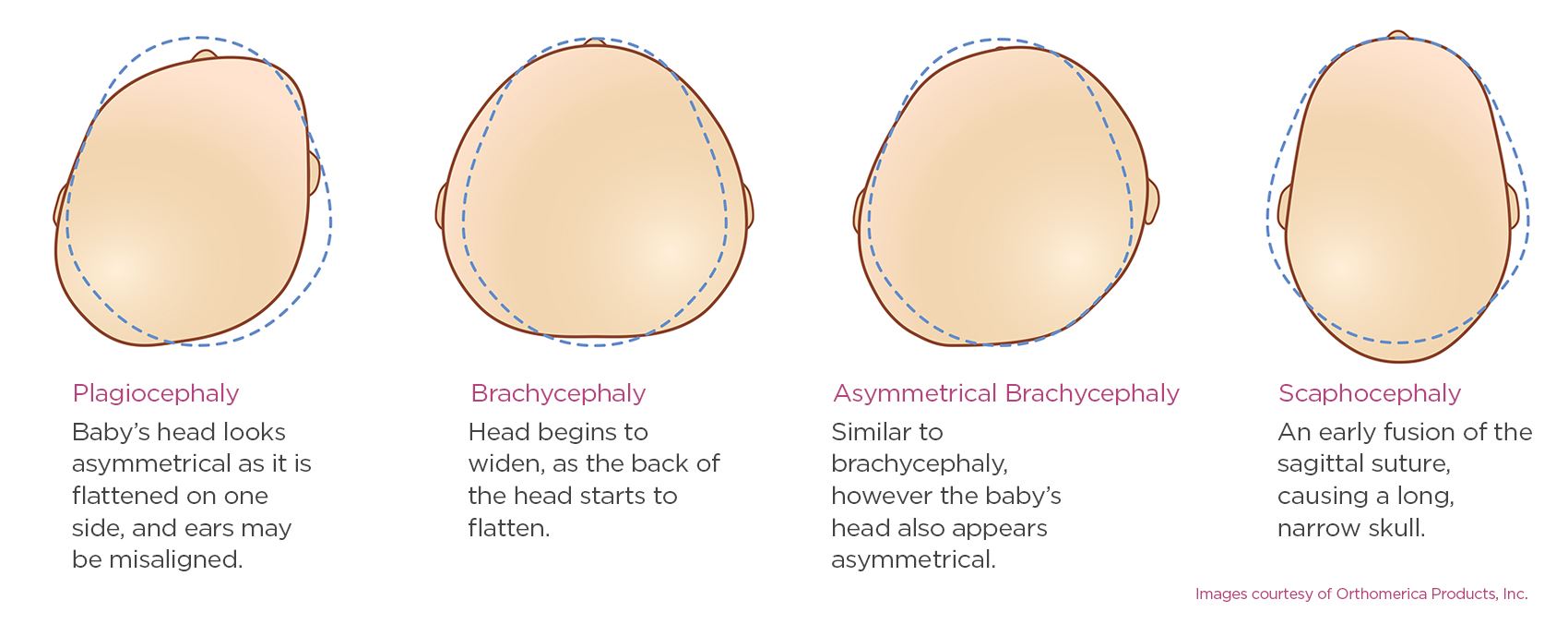Plagiocephaly, also known as flat head syndrome, is characterised by flattening of a baby’s head. Plagiocephaly can be noticeable from birth, or becomes apparent within the first few months.
 Since the changes in sleeping advice to parents during the early 1990s, which encouraged positioning babies on their backs rather than their fronts to sleep, there has been a significant reduction in the number of sudden infant deaths (SIDS). However, the number of babies with plagiocephaly has significantly increased during this time.
Since the changes in sleeping advice to parents during the early 1990s, which encouraged positioning babies on their backs rather than their fronts to sleep, there has been a significant reduction in the number of sudden infant deaths (SIDS). However, the number of babies with plagiocephaly has significantly increased during this time.
Normal development of head shape
A baby’s head is made up of 5 plates joined by sutures, which are designed to move during delivery to allow the baby’s head to pass down the narrow birth canal. This means that babies often have an altered head shape at birth due to this natural process. This shape usually improves in the first few days to weeks, and is nothing to worry about.
What to look out for
In some cases altered shapes that are present at birth do not improve as expected. This can be due to prolonged pressure on a particular spot on the baby’s head, causing what is also known as flat head syndrome.
All babies have different head shapes, however there are four distinct types of flat head syndrome:

We are able to treat all of these conditions with the STARband treatment.
However, repositioning should be attempted to reduce the pressure on the flattened side of the head as soon as it is noticed. Take a look at our tummy time guide for tips on how to improve the shape of your baby’s head - the sooner that you start this, the more effective it will be:
Tummy Time Guide
If your baby looks to one side most of the time they may have a condition called torticollis, or they may have a positional preference. This can treated by a physiotherapist working to improve the strength and movement in your baby's neck.
What to do next
If you are concerned about your child’s head shape, a plagiocephaly assessment at our clinic using the latest scanning technology will provide you with an objective report.
We consider your baby’s history, how much repositioning you have completed and the objective measurements of your baby’s head shape from our 3D scan. Our experienced paediatric orthotists will help you to fully understand the condition and discuss the options available for your child.*
Plagiocephaly Enquiry Form
*If you come for an assessment it does not mean we will recommend a STARband helmet.